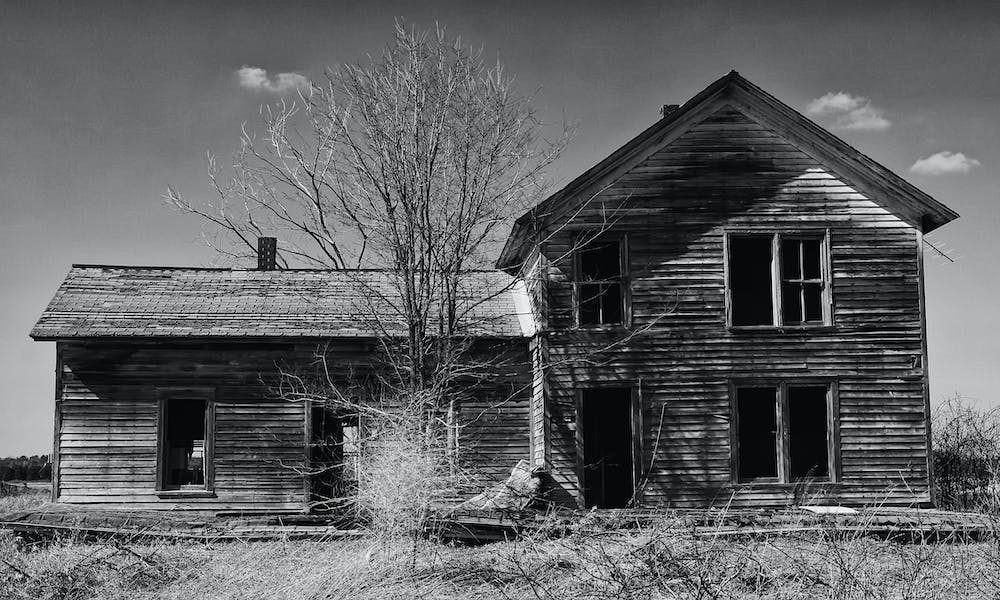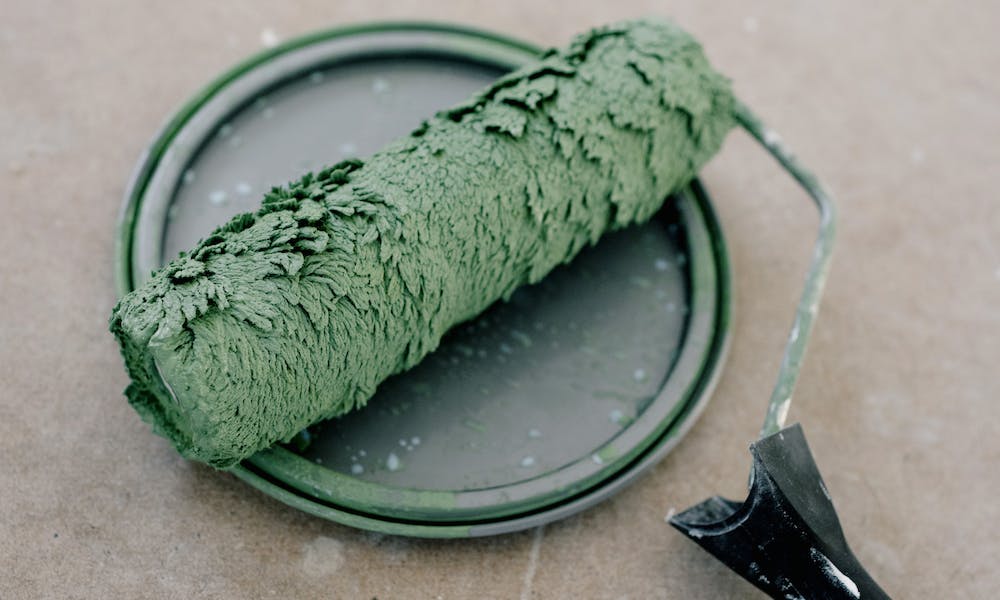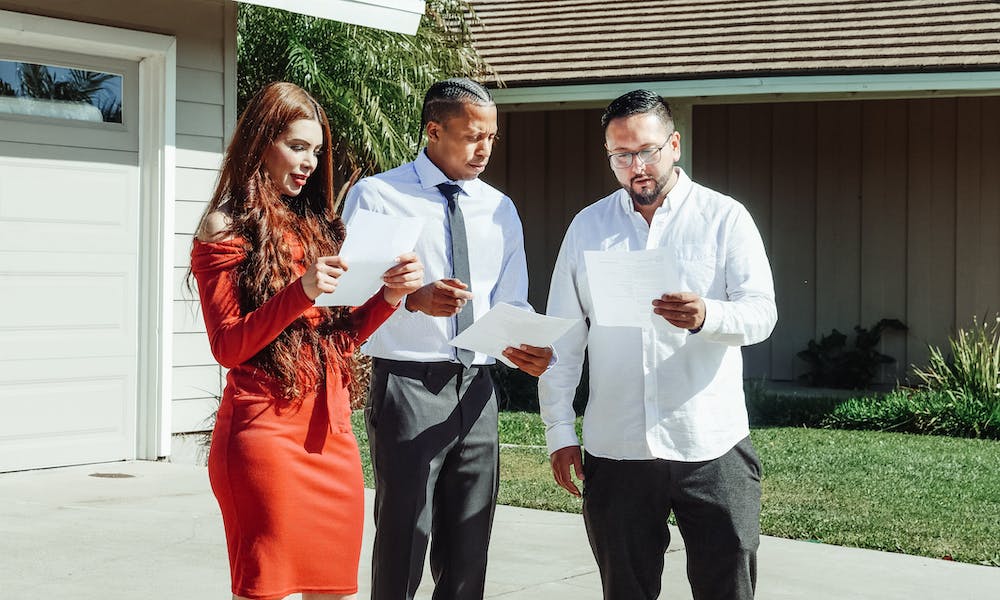

Selling a house in pristine condition is challenging enough, but what do you do when your property is far from perfect? Learn how to sell a crappy house where we dive deep into proven strategies and actionable tips to transform your property’s fate in the real estate market.
Whether dealing with outdated interiors, structural issues, or an undesirable location, this blog post is tailored to provide you with effective solutions to sell your house quickly and at a good price. Gain insights into enhancing your property’s curb appeal, setting the right price, and employing creative marketing tactics to attract potential buyers.
Stay with us as we unfold the secrets to turning your property’s flaws into unique selling points, ensuring you stand out in a crowded market and close the deal successfully. With our expert advice, knowing how to sell a crappy house will no longer feel like an impossible task, but a challenge ready to be conquered. Let’s embark on this journey together, unlocking the potential of your property and navigating the road to a successful sale!
Read More:
- How Much House Can i Afford With 60k Salary? Step by Step Guide
- Selling a House in an Irrevocable Trust Before Death: A Step-by-Step Guide
- Can Grandchildren Inherit From Grandparents? Step by Step Guide
- Can a Nursing Home Take a Trust? The Ultimate Guide
- Selling Mom’s House After Death: A Compassionate Guide
How to Sell a Crappy House? Understanding Your Property’s Value


When you’re ready to sell a house, especially the crappy one that may not be in the best condition, understanding your property’s true value is crucial. Setting the right price from the get-go can make all the difference between a swift sale and a property that lingers on the market.
1. Conducting Market Research
The first step in determining your property’s value is to conduct thorough market research. Look at similar properties in your area that have recently sold, especially those in comparable condition to your own. Take note of their selling prices, how long they were on the market and any adjustments made to their initial asking prices.
2. Evaluating Your Home’s Condition
Be honest and realistic about the state of your property. Assess the extent of repairs and renovations required, and consider how these issues might impact a potential buyer’s perception of value. Understand that significant repairs or a general state of disrepair can substantially lower the property’s market value.
3. Understanding the Impact of Location
Location is a critical factor in determining a property’s value. If your house is in a less desirable area or has particular challenges related to its location, this will need to be reflected in the price. On the flip side, a good location can sometimes offset some of the negative aspects of a property in poor condition.
4. Getting a Professional Valuation
Consider hiring a professional appraiser to get an accurate valuation of your property. An appraiser will take into account all aspects of the property, from its condition and size to its location and the current market conditions. This investment can provide you with a clear picture of what your property is truly worth, helping you set a realistic and competitive asking price. Read More: how to sell a home that needs repairs
5. Setting the Right Price
Armed with this information, you can set a price that is competitive yet fair. Remember, overpricing a property in poor condition can deter potential buyers while underpricing can result in leaving money on the table. Striking the right balance is key.
By taking the time to thoroughly understand your property’s value, you are setting the stage for a successful sale. In the next sections, we’ll delve into strategies for enhancing your property’s appeal, effective marketing tactics, and how to negotiate the sale, all aimed at helping you achieve the best possible outcome. So, stay tuned and get ready to transform your property’s prospects in the real estate market!
Effective Pricing Strategies


Setting the right price is a crucial element in the home selling process, especially when your property is not in tip-top shape. A well-thought-out pricing strategy can attract the right buyers and expedite the sale. Below are essential tips to guide you in establishing an effective pricing strategy for your house:
1. Be Realistic About Your Home’s Condition
- Acknowledge the state of your property and be realistic about how it impacts its value. A house requiring extensive repairs or updates cannot be priced the same as a fully renovated property in the same neighborhood.
- Focus on comparable sales of homes in similar conditions to get a sense of a fair market value.
2. Price It Right From the Start
- The initial listing price of your property creates the first impression for potential buyers. Pricing your house correctly from the start can generate interest and help in attracting offers.
- Avoid the common pitfall of overpricing with the thought of lowering it later. Properties that stay on the market for too long can become stigmatized, deterring potential buyers.
3. Consider a Pricing Strategy
- Employ a pricing strategy that suits your situation. For instance, pricing slightly below market value can create urgency and result in multiple offers, potentially driving the sale price up.
- A well-thought-out pricing strategy can be an excellent tool for generating interest and creating a competitive environment among buyers.
4. Show Buyers the Potential
- While your house may not be in the best condition, highlighting its potential can justify your asking price. Showcase areas of the home that have promise and help buyers visualize what the house could become.
- Providing cost estimates for potential repairs or renovations can also be beneficial, as it helps buyers understand the investment required to bring the property up to par.
5. Be Open to Negotiations
- Understand that buyers interested in a fixer-upper are likely to negotiate on price. Be prepared and willing to engage in negotiations.
- Have a clear understanding of your lowest acceptable price but remain flexible and open to reasonable offers.
6. Seek Professional Guidance
- Work with a real estate agent experienced in selling properties in less-than-perfect condition. They can provide invaluable guidance on pricing and negotiating the sale.
- An agent’s market knowledge and expertise can be instrumental in setting a competitive and realistic asking price.
By employing these effective pricing strategies, you are setting yourself up for a successful sale, even if your property is not in the best condition. The right price, combined with other selling strategies covered in this guide, will increase your chances of attracting serious buyers and closing the deal. Stay tuned as we delve into more tips and tricks to help you navigate the sale of your “crappy” house successfully!
Read More:
- How Much House Can i Afford With 60k Salary? Step by Step Guide
- Selling a House in an Irrevocable Trust Before Death: A Step-by-Step Guide
- Can Grandchildren Inherit From Grandparents? Step by Step Guide
- Can a Nursing Home Take a Trust? The Ultimate Guide
- Selling Mom’s House After Death: A Compassionate Guide
10 Best Curb Appeal Tips on a Budget
Curb appeal is paramount when selling a crappy house, as it’s the first impression that potential buyers get of your property. Enhancing the exterior of your home can significantly impact its perceived value and attract more buyers, even when you’re on a tight budget. Here’s how to boost your property’s curb appeal without breaking the bank:
1. A Fresh Coat of Paint
- Never underestimate the power of paint. A fresh coat on the front door, shutters, or trim can dramatically improve the appearance of your home.
- Choose neutral, welcoming colors that appeal to a broad audience.
2. Landscaping on a Dime
- Tidying up the yard and adding a few inexpensive plants or flowers can do wonders for your home’s curb appeal.
- Mow the lawn, trim the bushes, and remove any dead or overgrown vegetation.
3. Declutter and Clean
- A clean and uncluttered property appears well-maintained. Power wash the siding, windows, and walkways to remove dirt and grime.
- Clear away any clutter from the porch, yard, and driveway.
4. Small Repairs with Big Impact
- Address minor repairs that can make a significant difference in how your property is perceived. Fix broken railings, replace missing shingles, or repair cracked windows.
- Ensure that all outdoor lighting is in working order.
5. Upgrade Outdoor Lighting
- Good lighting enhances security and adds a welcoming ambiance. Add solar lights along walkways or upgrade porch lighting.
- Consider budget-friendly lighting options to illuminate key features of your property.
6. Focus on the Front Door
- Your front door is a focal point. Make it stand out with a vibrant color, or add a seasonal wreath or welcome mat.
- Ensure that the door hardware is in good condition and consider replacing it if necessary.
7. Add Inviting Touches
- Small details can make a big impact. Add potted plants, a new mailbox, or house numbers to enhance your home’s exterior appeal.
- Create an inviting entryway that makes potential buyers eager to see more.
8. Showcase Outdoor Living Spaces
- If you have a porch, deck, or patio, make sure it’s clean and well-staged. Add outdoor furniture and cushions to showcase the potential for outdoor living.
- Highlight these spaces as additional living areas, adding value to your property.
9. DIY Projects to Boost Appeal
- Take on simple DIY projects that can enhance curb appeal. Create a stone pathway, paint the fence, or add window boxes.
- Utilize online tutorials and affordable materials for budget-friendly improvements.
10. Regular Maintenance
Enhancing your property’s curb appeal on a budget is entirely possible with a bit of creativity and effort. These cost-effective strategies can transform the exterior of your home, making it more attractive to potential buyers and increasing your chances of a successful sale.
Addressing Major Repairs and Issues on a Crappy House


Selling a crappy house that needs significant work can be a daunting task, but addressing major repairs and issues head-on can make the process smoother and help you achieve a better sale price. Here’s how to tackle these challenges strategically:
1. Conduct a Thorough Inspection
- Before listing your property, conduct a thorough inspection to identify all the major repairs and issues that need attention.
- Consider hiring a professional inspector to ensure that nothing is overlooked, as undiscovered issues could lead to delayed negotiations or reduced offers later on.
2. Evaluate Cost vs. Return
- Once you have a list of necessary repairs, evaluate the cost of fixing them versus the potential return on investment.
- Focus on repairs that are likely to offer a good return and improve the overall impression and functionality of the house.
3. Address Structural and Safety Issues
- Prioritize repairs that address structural issues or safety concerns, as these are non-negotiable for most buyers and can significantly impact the value of your property.
- Issues like a leaky roof, foundation problems, or outdated electrical systems should be at the top of your list.
4. Improve Functionality
- Ensure that all the major systems in the house are in good working condition. This includes the heating and cooling systems, plumbing, and electrical systems.
- Buyers are more likely to make an offer on a house that is functional, even if cosmetic issues are present.
5. Consider Cosmetic Improvements
- While your focus should be on addressing major repairs, don’t underestimate the impact of cosmetic improvements.
- Simple fixes like painting, replacing worn carpets, or updating outdated fixtures can make your property more appealing to buyers.
6. Get Professional Help
- For major repairs, it’s often best to hire professionals to ensure the work is done correctly and up to code.
- Getting professional help can be a worthwhile investment, as it adds credibility to the repairs and provides reassurance to potential buyers.
7. Be Transparent with Buyers
- Be upfront about the condition of the property and any repairs that have been made or are needed.
- Providing documentation of repairs, inspections, and any warranties can build trust with potential buyers and facilitate the sale process.
8. Consider Offering a Repair Credit
- If certain repairs can’t be completed before selling, consider offering a repair credit to potential buyers.
- A repair credit can make your property more attractive, as it gives buyers the flexibility to make repairs according to their preferences.
9. Highlight the Positives
- Emphasize the positive aspects of your property, and show how it’s a good investment despite the need for repairs.
- Highlight any recent updates, the potential for customization, or the property’s desirable location to shift focus from the negatives.
10. Set a Competitive Price
Addressing major repairs and issues is a critical step in selling a house in need of work. By being proactive, transparent, and strategic, you can navigate these challenges and position your property for a successful sale.
10 Creative Ways To Market a House for Sale Fast


Selling a house that’s seen better days requires a bit more creativity in your marketing strategy. It’s all about presenting your property in the best light, attracting the right audience, and emphasizing the potential that lies within. Here’s how to leverage creative marketing tactics to make your house stand out:
1. Tell a Story
- Craft a compelling narrative around your property. Highlight its history, any unique features, or the potential it has for transformation.
- Use storytelling in your listing description to connect with potential buyers on an emotional level and help them envision the possibilities.
2. Focus on Potential
- Emphasize the potential of your property in your marketing materials. Highlight spacious rooms, unique architectural features, or a large yard that could be transformed into a beautiful outdoor oasis.
- Consider providing visual examples or conceptual drawings of how the space could be improved.
3. Use High-Quality Photography
- Invest in professional photography to showcase your property in the best possible light. Ensure that the photos highlight the strengths of your property and minimize its flaws.
- Consider including “before and after” photos if certain areas have been improved or cleaned up.
4. Create a Virtual Tour
- Offer a virtual tour of the property, allowing potential buyers to explore the space online. Ensure that the tour is well-lit and covers all areas of the property.
- A virtual tour can attract out-of-town buyers or those who prefer to do their initial screening online.
5. Leverage Social Media
- Utilize social media platforms to reach a broader audience. Create engaging posts, share your property’s story, and highlight its potential.
- Consider running targeted ads to reach potential buyers who are interested in fixer-upper or investment properties.
6. Host a Unique Open House
- Make your open house event stand out by offering something unique. Consider providing refreshments, hosting a mini-workshop on home improvement, or having a contractor on-site to answer questions about potential renovations.
- An engaging open house can create buzz and attract more potential buyers.
7. Highlight the Location
- If your property is in a desirable location, make sure to emphasize this in your marketing. Highlight proximity to schools, parks, shopping, or public transportation.
- A great location can sometimes outweigh the downsides of a property in need of work.
8. Target the Right Audience
- Focus your marketing efforts on reaching the right audience. Aim for investors, contractors, or DIY enthusiasts who are looking for a project or an opportunity to add value.
- Use language in your listing that appeals to this audience, highlighting the property’s potential for transformation and return on investment.
9. Offer Incentives
- Consider offering incentives to sweeten the deal. This could include a home warranty, a credit towards closing costs, or a discount for closing quickly.
- Incentives can make your property more attractive and show that you’re motivated to sell.
10. Be Transparent
Be honest and transparent about the condition of the property in your marketing materials. Highlight the positives but don’t shy away from mentioning the areas that need work. - Transparency builds trust and helps attract buyers who are genuinely interested and ready to take on a fixer-upper.
Using creative marketing tactics can help you overcome the challenges of selling a house in less-than-perfect condition. By highlighting the potential, focusing on the positives, and targeting the right audience, you can attract interested buyers and get your property sold.
Read more:
- How Much House Can i Afford With 60k Salary? Step by Step Guide
- Selling a House in an Irrevocable Trust Before Death: A Step-by-Step Guide
- Can Grandchildren Inherit From Grandparents? Step by Step Guide
- Can a Nursing Home Take a Trust? The Ultimate Guide
- Selling Mom’s House After Death: A Compassionate Guide
Working with the Right Real Estate Agent


Selling a house that’s in less-than-ideal condition presents unique challenges, making it crucial to have the right real estate agent by your side. A knowledgeable and experienced agent can be instrumental in navigating these challenges, setting a competitive price, and employing effective marketing strategies. Here’s how to ensure you partner with the perfect agent for your situation:
1. Look for Experience in Selling Fixer-Uppers
- Seek out agents who have a track record of successfully selling homes that need work. They’ll have a better understanding of the market, know how to target the right buyers, and be able to offer valuable advice on pricing and marketing strategies.
2. Check References and Reviews
- Don’t hesitate to ask for references from previous clients, particularly those who have sold similar properties. Check online reviews and testimonials to get a sense of the agent’s reputation and performance.
3. Ask About Their Marketing Strategies
- Inquire about the agent’s marketing plan for your property. Ensure that they have creative strategies in place to highlight the potential of your home and reach the right audience.
4. Ensure They Have a Strong Network
- A well-connected agent can tap into their network to find potential buyers, contractors for any necessary repairs, or even staging professionals to help present your property in the best light.
5. Discuss Communication and Availability
- Establish clear communication expectations from the start. Ensure that your agent is readily available to answer your questions, provide updates, and offer guidance throughout the selling process.
6. Talk About Pricing Strategies
- Have an open and honest discussion about how to price your property. Your agent should be able to provide a realistic valuation, taking into account the condition of the home and the current market conditions.
7. Verify Their Negotiation Skills
- Ensure that your agent has strong negotiation skills. Selling a fixer-upper often requires more negotiation to reach a fair and mutually beneficial agreement.
8. Discuss Their Familiarity with the Local Market
- Your agent should have extensive knowledge of the local real estate market, including trends, pricing, and the types of buyers looking for fixer-upper properties.
9. Ensure They Have a Proactive Approach
- Choose an agent who takes a proactive approach to selling your property. They should be actively marketing your home, seeking out potential buyers, and continuously working to get your property sold.
10. Build a Relationship of Trust
Establish a relationship of trust with your agent. You should feel comfortable discussing your concerns, asking questions, and relying on their expertise to guide you through the selling process.
Working with the right real estate agent can make all the difference when selling a house in need of repairs. They can provide invaluable support, resources, and knowledge to help you navigate the challenges and ultimately achieve a successful sale.
11 Home-Staging Tips to Sell Your House Fast
Staging a house can play a crucial role in attracting potential buyers and securing a quick sale, even when the property is far from perfect. Through strategic staging, you can highlight the home’s best features, minimize its flaws, and help buyers envision the possibilities. Here’s how to effectively stage your house for a speedy transaction:
1. Focus on Curb Appeal
- First impressions matter. Ensure the front yard is tidy, add some potted plants or flowers, and make sure the entrance is inviting. A fresh coat of paint on the front door can also make a significant impact.
2. Declutter and Clean
- Remove excess furniture, personal items, and clutter from each room. A clean, clutter-free space appears larger and more inviting, helping buyers to imagine their own belongings in the house.
3. Highlight Key Areas
- Focus your staging efforts on the key areas of the house that have the most influence on buyers’ decisions. The living room, kitchen, and master bedroom should be your top priorities.
4. Use Lighting to Your Advantage
- Make sure each room is well-lit, either with natural light or well-placed lamps and light fixtures. Good lighting can make a space feel warm and welcoming.
5. Neutralize and Depersonalize
- Opt for neutral paint colors and décor. This helps to create a blank canvas, allowing buyers to envision the space according to their own tastes.
6. Highlight the Positive Features
- If your house has unique or positive features, such as a fireplace or built-in shelving, make sure these are highlighted and not obscured by furniture or other items.
7. Create a Sense of Spaciousness
- Arrange furniture to maximize space and create a flow throughout the house. Consider removing any oversized or unnecessary pieces to enhance the feeling of spaciousness.
8. Add Strategic Touches
- Add touches that create a sense of home, such as fresh flowers, a bowl of fresh fruit in the kitchen, or soft towels in the bathroom.
9. Address Any Odors
- Ensure that your house smells fresh and clean. Address any pet odors or musty smells, as these can be a major turn-off for buyers.
10. Provide Information on Potential Upgrades
Consider providing information on potential upgrades or improvements that could be made to the property. You could create a small display with “before and after” photos, cost estimates, and a list of recommended contractors.
11. Consult a Professional Stager
If you’re unsure where to start, consider consulting a professional home stager. They can provide expert advice and may even offer rental furniture and décor to enhance your staging efforts.
Staging your house effectively can make a world of difference when it comes to attracting potential buyers and achieving a quick sale. By focusing on key areas, creating a welcoming atmosphere, and highlighting the home’s best features, you can overcome the challenges of selling a property in less-than-perfect condition.
11 Negotiating Strategies When Selling Your Home
Negotiating the sale of a house that’s in poor condition requires skill, patience, and a strategic approach. Sellers need to be prepared for potential lowball offers, lengthy negotiations, and even some tough conversations. Here are key negotiation techniques to help you navigate these challenging waters and secure the best possible deal:
1. Be Prepared with Facts and Figures
- Arm yourself with information about your property and the local real estate market. Be ready to justify your asking price with comparable sales, property assessments, and other relevant data.
2. Highlight the Positive Aspects
- Focus on the positive aspects of your property, even if they are few. Emphasize any unique features, the potential for improvement, or the desirability of the location.
3. Be Transparent About the Condition
- Maintain transparency about the condition of the property. Clearly disclose any known issues or required repairs, and be prepared to discuss potential costs for fixing them.
4. Build Rapport with the Buyer
- Establishing a positive relationship with the buyer can create a more collaborative negotiation environment. Engage in open and honest communication, and show a willingness to work together towards a mutually beneficial outcome.
5. Stay Calm and Professional
- Negotiations can get heated, especially when dealing with a fixer-upper. Maintain your composure, stay professional, and avoid taking low offers or critical comments personally.
6. Be Flexible and Open to Compromise
- Flexibility can be key in closing a difficult sale. Be open to compromise, whether it’s on the price, the closing date, or other terms of the sale.
7. Offer Incentives or Concessions
- Consider offering incentives to make the deal more attractive. This could include covering closing costs, providing a home warranty, or offering a credit for repairs.
8. Know Your Bottom Line
- Before entering negotiations, know your bottom line—the minimum offer you’re willing to accept. This helps prevent making hasty decisions in the heat of the moment.
9. Don’t Rush the Process
- Be patient and give the negotiation process the time it needs. Rushing to close the deal can lead to unfavorable terms or overlooked details.
10. Seek Professional Advice
Don't be afraid to seek advice from your real estate agent or a negotiation expert, especially if you're unfamiliar with the process or feel out of your depth.
11. Be Ready to Walk Away
If negotiations reach a stalemate or the buyer’s terms are unreasonable, be prepared to walk away. Sometimes this can lead to the buyer re-evaluating their position and coming back with a better offer.
Mastering the art of negotiation is crucial when selling a house in poor condition. By staying informed, maintaining professionalism, and employing strategic techniques, you can navigate these challenging negotiations and secure a deal that meets your needs.
Closing the Deal: Final Steps and Considerations


Once you’ve navigated the complexities of pricing, marketing, staging, and negotiating, you’re on the cusp of finalizing the sale. Closing the deal is a critical phase that requires attention to detail and thorough preparation to ensure everything goes smoothly. Here’s a roadmap to guide you through the final steps and considerations:
1. Review the Purchase Agreement
- Go through the purchase agreement thoroughly to ensure that all terms, conditions, and contingencies are clearly outlined and match what was agreed upon during negotiations.
2. Stay on Top of Deadlines
- Monitor key dates and deadlines, such as the inspection period or mortgage approval deadline. Address any concerns or issues promptly to prevent unnecessary delays.
3. Address Inspection Issues
- If the buyer conducts a home inspection (which is likely), be prepared for potential repair requests. Discuss with your agent how best to handle these, whether it’s negotiating a lower price, offering a credit, or addressing the repairs directly.
4. Prepare for the Appraisal
- Lenders will typically require an appraisal to determine the home’s value. Ensure the house is tidy and any agreed-upon repairs are completed. Although your house might be in less-than-perfect condition, an orderly presentation can positively influence the appraisal.
5. Finalize Any Remaining Repairs or Agreements
- Ensure all negotiated repairs or concessions are completed or settled before the closing date. Provide receipts or proof of work if required.
6. Clear All Liens and Encumbrances
- If there are any outstanding liens, mortgages, or other encumbrances on the property, ensure they’re resolved before the closing. This will provide a clear title to the buyer.
7. Verify Closing Costs and Settlement Statement
- Prior to the closing date, review the settlement statement or Closing Disclosure to ensure that all financial details, including closing costs, are accurate.
8. Prepare for the Final Walkthrough
- The buyer will likely want a final walkthrough before closing. This is their opportunity to ensure the property’s condition hasn’t changed and all agreed-upon repairs have been made.
9. Gather Necessary Documents and Identification
- Ensure you have all the required documentation ready for the closing. Typically, you’ll need a government-issued photo ID and any other documents your real estate agent or closing attorney advises you to bring.
10. Attend the Closing Meeting
The closing meeting, where all documents are signed, and funds are transferred, is the final step. While it might be emotional, especially if you have a long history with the home, it's also the culmination of your hard work.
Read More:
- How Much House Can i Afford With 60k Salary? Step by Step Guide
- Selling a House in an Irrevocable Trust Before Death: A Step-by-Step Guide
- Can Grandchildren Inherit From Grandparents? Step by Step Guide
- Can a Nursing Home Take a Trust? The Ultimate Guide
- Selling Mom’s House After Death: A Compassionate Guide
Conclusion: Wrapping Up Your Sale
As we wrap up this comprehensive guide, let’s reflect on the key takeaways and essential strategies that have led to a successful sale.
Celebrate Your Achievement
Selling a fixer-upper is no small feat. It requires a unique set of strategies, a good deal of patience, and a proactive mindset. Take a moment to celebrate your perseverance and the skills you’ve honed throughout this process.
Reflect on the Experience
Take some time to reflect on what worked well and what could have been done differently. Every sale is a learning experience, and understanding what strategies were most effective can be invaluable for future real estate endeavors.
Key Strategies for Success
- Understanding Your Property’s Value: Gaining a clear understanding of your property’s value and its position in the market was the first crucial step.
- Effective Pricing: Setting the right price helped attract potential buyers without leaving money on the table.
- Enhancing Curb Appeal on a Budget: Small, cost-effective enhancements made a big difference in first impressions.
- Addressing Major Repairs and Issues: Being proactive about significant issues helped mitigate potential deal-breakers.
- Creative Marketing Tactics: Using creative marketing strategies ensures your listing reaches the right audience.
- Working with the Right Real Estate Agent: Partnering with an experienced agent provided guidance and expertise.
- Staging Strategies for a Quick Sale: Effective staging allows buyers to see the home’s potential.
- Negotiation Techniques for Difficult Sales: Mastering the art of negotiation ensured you navigated lowball offers and critical comments with poise.
- Closing the Deal: Paying attention to the details during the closing process ensured a smooth transition.
Moving Forward
With the sale complete, it’s time to look ahead. Whether you’re planning to purchase another property, invest in real estate, or simply enjoy the fruits of your labor, the skills and experience you’ve gained through this process have prepared you for future success.
Share Your Insights
Consider sharing your experience and the strategies that worked for you with others looking to sell a fixer-upper. Your insights could be invaluable to someone else navigating this challenging process.
A Final Word
Selling a crappy house may seem daunting, but with the right strategies, a bit of elbow grease, and a proactive approach, it is possible to navigate this challenging scenario and come out on top.
